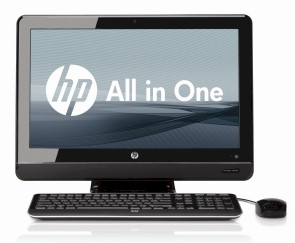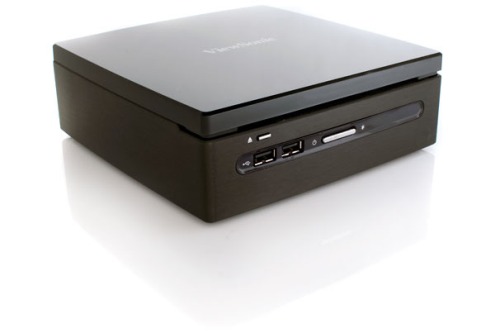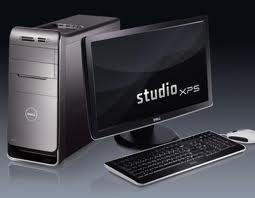The holidays are upon us, and it’s a fine time to consider replacing your aging desktop PC. Much has changed in the past year, with new processors and graphics cards from AMD, Intel, and Nvidia delivering performance enhancements at every price point. And you still have a wealth of options to choose from, whether you’re shopping for a fixed retail configuration or customizing a system from a boutique PC vendor. Colorful cases of all shapes and sizes have long replaced the humble beige box, but indecipherable naming conventions aren’t making shopping any easier.
Related stories
Four great ways to prepare your old PC for sale
10 exciting ways you can put your old computer to new uses
How to sell your old gadgets for the best possible price
Presented with so many possibilities, you need to narrow the field by considering what you want to use your new desktop for. Are you an avid photographer looking for a speedy but cost-effective platform for editing high-resolution images? You’ll benefit from buying a machine with extra RAM and a discrete graphics card. If you’ve acquired an extensive media collection, and you want an inexpensive and efficient way to pipe it to your HDTV, a compact PC tailored toward media sharing and playback may be your best bet.
Whatever your needs, you can find a desktop configuration to fit the bill. If you’re the tinkering type, or simply interested in learning more about the inner workings of your PC, check out Build your own Windows 7 power PC from scratch without breaking the bank
Desktops fall into three major categories, each with its own range of price and performance: all-in-one PCs, compact PCs, and tower PCs (which we further divide into budget, mainstream, and performance subcategories). Each style of machine has different strengths and weaknesses, and choosing the one that’s best for you depends largely on how you plan to use it.
Once you’ve picked the appropriate desktop category, our guide to PC specifications will help you select a system that delivers the performance you need, while staying within your budget. And when you’re ready to buy, check our shopping tips for advice on how to get the most from your investment.

All-in-One Desktops
All-in-one PCs are self-contained: Components are mounted behind a display, with a screen size ranging from 18 to 27 inches. Since you have no cords to manage or peripherals to juggle, setting up your new all-in-one PC can be as simple as pulling the machine out of the box and plugging it in.
With their compact size and integrated displays, all-in-one PCs can reside almost anywhere you have a spare power outlet. Most all-in-ones also offer touchscreens, with support for Windows 7’s multitouch gestures.
All-in-one components vary from brand to brand, but you can expect to pay more for an all-in-one than for a similarly equipped standard desktop; again, some models target buyers on a tight budget, while others load up on performance-oriented components (at a higher price, of course). For example, low-priced all-in-ones such as the Gateway ZX4300-01e use laptop or netbook processors and integrated graphics; you’ll get reduced performance to match the reduced price tag.
Related story- Look at these things when buying a desktop PC
If you have a larger budget, you can opt for a model like the HP TouchSmart 600 Quad, which includes a quad-core processor (most often seen on full-size desktops) to deliver superior performance, and sports a roomy 24-inch screen. You’ll be paying in the area of $2000 for those high-end specs, however. Whatever your needs, you’ll likely find an all-in-one that’s just right; check out “All-in-One PCs for Everyone” to read about some of our favorite models for every scenario.
Many all-in-one PCs come with a wireless keyboard and mouse, Bluetooth support, and Wi-Fi connectivity. This reduces cord clutter to a minimum–an important consideration in spaces where attractive decor or efficient use of space is at a premium. For ranked charts of all-in-one PCs that we have tested in recent months, see “Best Big-Screen All-in-One PCs” and “Best Budget All-in-One PCs.”
Compact PCs
As the smallest members of the desktop computer family, compact PCs often omit features to deliver computing power in a tiny package. The combination of energy-efficient components, quiet operation, and small size makes compact PCs ideal for people who want a nonintrusive machine. A typical compact PC costs between $300 and $600, though the price rises as you add optional upgrades.
Compact PCs tend to be equipped with laptop or netbook components, such as Intel Atom processors. That limits their usefulness for tasks that demand lots of processing power, but it makes for quiet, energy-efficient operation. Not all compact PCs are created equal, however, so pay attention to specifications when shopping. Some compact PCs are configured for as low a bottom-line price as possible; others are packed to the gills to provide optimal performance in a tight space.
When you’re checking out a compact PC, keep an eye on the number of available ports, and think about what you’d like to use. The smaller the system’s footprint, the fewer features you can reasonably expect–and that includes fewer connectivity options. HDMI ports have become increasingly common, and are an asset for home theater setups. The typical hard-drive size is 320GB, though 250GB is also common; we’ve seen some compact systems carrying up to 1TB (for a $100 upgrade premium). For a chart of recent high-ranking PCs in this category, see “Top 5 Compact PCs.”

Budget PCs
A budget tower desktop carries standard desktop components, but can cost as little as $300 if you select older hardware or an inexpensive, low-end processor. Typically, such PCs are minitower systems, with fewer drive bays than a full tower has. The Gateway SX2840-01 offers a Core i3 processor, delivering relatively speedy performance for just under $600.
Inexpensive tower desktops usually incorporate low-powered, integrated graphics rather than discrete graphics cards. As a result, your entertainment options may be limited. High-definition media playback suffers on models equipped with older Intel-based integrated graphics; and if you’re interested in gaming, you’ll find that such a system is hard-pressed to tackle anything more demanding than Flash-based titles. Machines equipped with Intel’s Core i3 processor offer improved integrated-graphics performance built right onto the chip; though they aren’t adequate for video games, they do support satisfactory high-def media playback.
Budget PCs generally have at least 320GB of storage space and at least 2GB of RAM, but permit you to make few upgrades beyond adding RAM or a larger hard drive. They rarely leave much room for expandability inside their cases, either. Still, if you need a computer for little more than word processing, e-mail, and occasional DVDs or online videos, one of these machines should suit you just fine. For a ranked chart of systems in this category, see “Top 10 Budget Desktop PCs.”
Mainstream PCs
Higher up in the desktop chain, you’ll find systems aimed at mainstream users. These PCs start in the vicinity of $800, and carry at least 500GB hard drives and about 4GB of RAM. Powered by dual-core, quad-core, or even lower-end six-core processors, they deliver better performance than budget desktops do, without breaking the bank. Consider the Dell Studio XPS 7100: For just over $1500, this machine features a six-core Phenom II X6 1055T processor and an ATI Radeon HD 5870 graphics card.

Photo-editing applications stand to benefit from working with multicore processors, and entertainment enthusiasts will appreciate the improved gaming performance and stutter-free HD media playback that a discrete graphics card helps deliver. Many of the desktops in this category include a Blu-ray drive, either standard or as an optional extra. And if your video-editing needs are modest, you probably can find a machine in the mainstream price bracket that has enough power to handle your creative projects. Check out our chart of recent models in “Top 10 Mainstream Desktop PCs.”
Performance PCs
Occupying the high end of the spectrum are performance desktops. Such PCs generally start at a little over $2000, though category titans like the Origin Genesis sit at just under $7000. Most performance PCs are full tower systems, equipped with a slew of drive bays and expansion slots. Designed to tackle challenging tasks, they come equipped with the latest and greatest Intel or AMD quad- and six-core processors, at least 6GB of RAM, and at least one discrete graphics card. Some performance desktops contain multiple graphics cards.
Performance desktops are suitable for users who need a lot of processing power to get their work done–that is, professionals who do extensive high-resolution photography or video editing–and gamers who are willing to pay for top-of-the-line performance and visual effects.
Traditional PC manufacturers such as Dell and HP sell performance desktops, but so do smaller boutique PC makers that specialize in highly configurable custom systems tailored to your needs and budget. For a chart of recent high-end models, see “Top 10 Performance Desktop PCs.”




